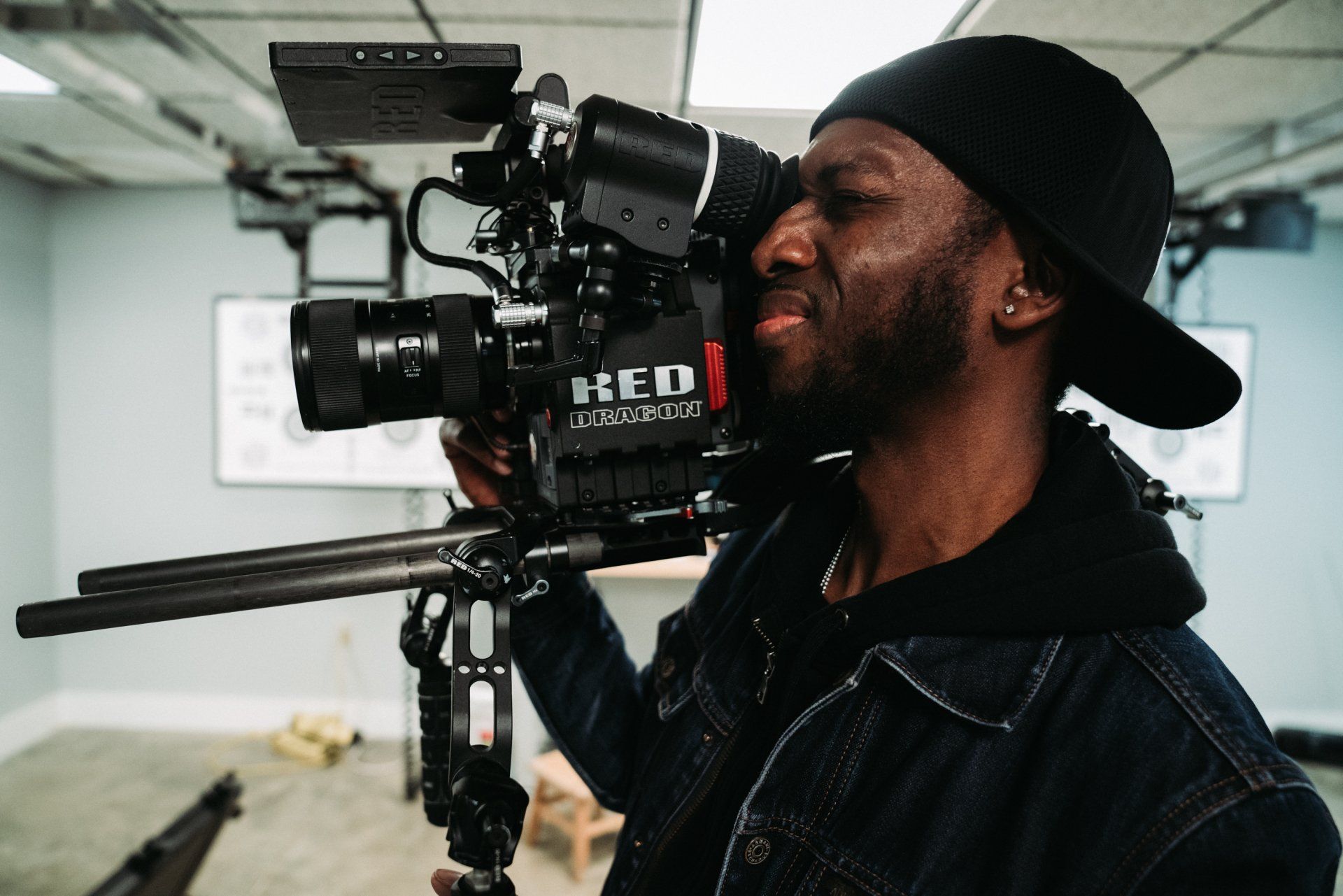
Corporate videos resemble movies that companies make. They are used to share messages, promote products, train employees, or reach out to individuals. Imagine viewing a YouTube video about the new phone or the company’s work culture —a corporate video.
These videos help businesses communicate better and reach more people. This blog will look at how companies like corporate video production dc plan for them, create them, and use these types of videos.
Critical Components of Corporate Videos
Corporate video has multiple main parts that help create successful videos. Let us break down the critical elements into simple terms:
1. Script
Writing The Story: A script is like a blueprint of the video detailing what will be said and shown.
It consists of spoken words by actors or voice-overs to convey the message effectively.
Encourage viewers to take specific action after watching, like visiting websites or subscribing.
2. Visuals
Decide where to shoot your video-whether it’s an office, outdoors, or studio.
Utilize objects and decorations to increase visual appeal and send messages across.
Use text, logo, or animation for visual elements to make videos more engaging.
3. Sound
Add background music or voice-overs to create a mood or emphasize key points.
Enhance the viewing experience by including sounds such as applause, footsteps, doorbells, etc.
Ensure the sound is clear and crisp so viewers can hear everything said in the video clip.
4. Editing
The different camera shots must be pieced together to develop one complete storyline.
Transitions that smoothly transition between scenes are essential for me, too, as I add them for a polished look,
Adjust the colors of the video so that they are visually appealing and consistent throughout it.
5. Branding
Incorporate company logos and colors to support brand identity.
Consistent Style ensures that the video aligns with the company’s branding guidelines.
This ensures that the brand elements are spread seamlessly throughout the video for recognition.
6. Distribution
Share videos on websites, social media, or video hosting platforms for maximum reach.
Videos can be included in marketing campaigns to engage customers.
To measure the performance of a video, monitor views, likes, shares, comments, etc.
This knowledge is vital in creating impactful corporate videos that effectively tell messages and engage viewers.

Different Types Of Corporate Videos
Various versions exist of corporate videos, with each serving a distinct purpose. Let us go through them using simple terms:
1. Testimonial Videos
Customer Testimonials: Happy clients share their experience with a product or service they have used before.
Employee Testimonials: Employees discuss their workplace environments and company cultures.
Expert Testimonials: Industry practitioners endorse products or services provided by a company.
2. Promotional Videos
Product Showcase - Highlighting features and benefits of a product or service.
Company Overview - Introducing the values of the company and its accomplishments.
Event Promotion – Any future events, such as conferences or product launches, can be advertised this way.
3. Explainer Videos
Product Demos - Showing how a particular product works and its benefits.
How-To Guides – Instruct the audience on effectively using various goods or services.
Process Explanation - Simplifying intricate procedures or concepts so that they become more accessible to comprehend.
4. Training Videos
Onboarding Videos - These help new employees understand company policies and procedures.
Skill Development - Teaches workers specific skills related to their jobs.
Safety Training – Educate employees concerning workplace safety protocols and practices.
5. Recruitment Videos
Company Culture Showcase: It means giving potential employees an insight into your company's working environment.
Job Role Descriptions: They are meant to explain job roles, responsibilities, and career growth chances.
Employee Testimonials: These are the experiences of current employees at the company they work for.
6. Event coverage videos
Highlights Reel: This video briefly highlights critical points during conferences, corporate events, or trade shows.
Speaker Sessions: During these events, videos share presentations or talks by industry experts.

Simple Tips on How to Make Your Corporate Video Look Good
Some steps are involved in making a visually appealing corporate video that can keep viewers' attention as it is supposed to be. Some of these tips have been simplified below:
Start with a Brainstorm
The initial stage should consist of brainstorming ideas that will help inspire and spark creativity when creating your video.
Make sure you note down everything so they may help you develop future video concepts.
Focus on Customer Benefits
Instead of just listing product features, showcase how your product or service benefits customers.
This is an effective way to communicate with your audience because they can resonate well with visual advantages.
Perfect the Script or Storyboard
First, create a script or design a storyboard containing all the shots and sequences for your video presentation step by step before any shooting begins.
This process helps you refine your film's story and structure before production begins, saving time and money later on during filmmaking.
Set the Pace and Build to an Inspiring Conclusion
Attract attention from the beginning of your film instantly within the first 10 seconds.
Maintain a storyline that has all three elements, opening, middle part, and climax, to keep the audience interested.
Pair Ideas with Strong Visuals
Choose visuals, colors, and images that make your ideas come alive.
Make the first scene eye-catching so that viewers want to know more about what they see.
Planning Your Corporate Video
When a company wants to make a video, it has to plan for it properly. Here are things you should consider:
Identifying Target Audience
This means knowing who will watch the video; this way, it may get better reception from those who watch it. Find more details below:
Understanding the Audience
It involves knowing the age, interests, and preferences of the people who will watch the video. As such, it allows tailoring its contents to align with their tastes.
Reaching the Audience
Companies can better reach the audience through their videos by researching where the audience spends time online. This ensures that the delivered reaches individuals who fit a specific content niche.
Establishing the Purpose of the Video
Creating a purpose for making a film is like setting an objective. The objectives help guide how one makes a movie and what one would like to accomplish. More information is given:
Defining Goals
Companies decide whether to promote a product, teach something, or share their values through videos.
Clear Message
A clear message ensures that viewers understand what the video is trying to say. This delivers focused and impactful messages by the target audience’s expectation level regarding relevance on topic coverage towards desired goals attainment within organization-wide ranges of strategic plans implementation.

Choosing the Best Medium for Message Delivery
When choosing a suitable medium, one must decide how to present the content. That may be done through live-action or a mixture of animation and real people. Here are the details:
Real People
This can make a video appear more personal and more accessible for audiences to relate to.
Animation
Animation makes it easier to understand complicated concepts better and makes storytelling more artistic and entertaining.
Mixed Media
Sometimes, blending live-action with animation is an innovative way to deliver messages that work best.

How Do We Determine the Number of Actors Needed?
Deciding on the number of actors required in a video is essential for compelling storytelling. Read on:
Acting Role
Some actors are used in videos to showcase products, while others take part in some skits or narrate their experiences.
Appropriate Brand Representation
To maintain consistency and credibility in your videos, it is essential to choose actors who embody your brand image.
Impacts on Engagement
By including an appropriate number of characters, viewers become active participants who “feel” what they see, making the video more attractive and unforgettable.
What are some ways that storytelling could be incorporated into a corporate video?
It’s essential when making company videos with stories inside them to engage the audience well enough to communicate effectively. Here are ways to simplify this topic:
Know Your Viewership
Find out what kind of people will be interested in your message by defining your target public first. Then, content that relates directly to them will be created, using their interests and challenges as reference points.
Create a Powerful Storyline
Start by sketching ideas, outlining key points, brainstorming any possible themes, and then playing around with these ideas until they come together as a solid story. Share real-life success stories or testimonials to help you engage effectively with your audience.
Incorporate Your Company Values into Narrative Films & Videos
Much can be disclosed about your brand if you focus on its values like culture, what makes it different from other companies, etc. These elements should help create an authentic and consistent brand identity that can resonate with your target audience.
Work with Video Production Experts
Get assistance from a corporate videographer or video production agency to visually communicate your story. They can assist you in enhancing the storytelling within your films or videos and maintaining one visual style throughout all of them.
Strategically Drive Results
Always have a purpose behind creating video stories. Consider how you will distribute these stories and their impact on editing and communication. Share your videos via social media, websites, email marketing, etc., to optimize your reach.
Therefore, when these methods are applied correctly in making corporate videos, they become exciting stories that appeal to viewers and build up your brand image, leading to business growth.

Corporate Video Production Process
To produce a corporate video, you need to follow several steps. Let’s discuss it in simpler terms:
Pre-Production
- Come up with ideas and write a script that communicates your story effectively.
- Budgeting and Timeline Setting: Establish how much you can expend and plan the tasks needed for finishing the video within the specified time frame.
Production
- Filming the Video Content: Cameras record scenes per the script and storyboard that was previously developed.
- Storyboard Creation: Sketch visually scenes to plan their appearance in the video.
- Casting and Location Scouting: Search for actors and appropriate film locations for your movie.
- Voiceover Recording: Complement visuals through recording spoken narration or dialogue.
- Graphics Design: To enhance this video, develop visual elements such as text, logos, or animations.
- Feedback and Revisions: Collect input from stakeholders who will advise on changes required before developing a refined final product.
Post-Production
- Editing: Assemble filmed footage into one coherent narrative.
- Color Correction: Make changes in color balancing for consistency of visual appeal throughout the whole video production process.
- Sound and Effects Addition: Emphasize audio soundtrack content using music, sound effects, and visual effects, thus producing a neat-looking video ready to be shared online.

Importance of Corporate Video Production
Corporate videos are also essential tools for business marketing communication. Trying to get to know why they’re so crucial, let me explain it again:
Enhancing Brand Awareness and Sales
Through videos, companies show what they offer, enticing potential customers toward themselves.
Engaging videos leave unforgettable impressions on viewers’ minds, thus building brand loyalty levels higher than before when unnoticed by the public eye where its products are.
Convincing videos have power over people, so sometimes customers opt for them instead of other options, increasing sales volume considerably.
Building Trust & Credibility with Stakeholders
The videos allow companies to share their values, mission, and behind-the-scenes internal activities, which is enough to establish customer trust.
They make a brand more relatable and trusted by featuring real people and stories in videos.
Authority in any field can be quickly achieved through educational videos where company employees give information.
Improving Website Conversion Rates
Adding videos to websites grabs visitors’ attention and increases session time.
Videos help simplify complicated subjects within seconds, making it easy for site users to understand them or engage with certain products.
Integrate videos with clear calls to action so one can sign up for newsletters or purchase as directed on your website’s pages.
Social Media Engagement
Having videos shared on such Video social media platforms as Instagram, Facebook, and TikTok helps draw more likes, comments, and shares from a more comprehensive audience range than just having text-based content only would do.
Compared to texts alone, video has a higher chance of going viral, reaching more people, and increasing brand presence worldwide and beyond!
Unlike ordinary pictures or words, videos let viewers interact with what they see.
Educating Employees
Training Tool: Internal corporate videos that effectively train new employees about company policies, procedures, best practices, etc.
Communication Medium: Video use is an effective way of communicating essential updates about companies. It is a way of conveying its messages smoothly yet engagingly compared to other methods, such as writing memos or sending emails.
Building Community: By sharing employee successes and showcasing workers’ achievements through various media channels, some organizations promote a sense of belonging and unity within their firms.
Showcasing Company Culture
Attracting Talent: Videos focusing on office culture can help attract top talents looking for workplaces where their values and personalities match perfectly.
Employee Retention: By displaying the company’s positive work environment, video clips can increase employees’ satisfaction rates, thus leading to higher retention rates among those workers who enjoy what they do daily!
Brand Identity: Cultural, corporate communication videos reinforce brand thinking and identity while fostering an exclusive corporate community.

Onboarding Support
Introduction to Company Culture: Videos are a good way of presenting the values, culture, and work environment to newly recruited employees.
Setting Expectations: Elaborating on the roles one is expected to play and responsibilities and expectations through videos will help new staff understand their positions better.
Training Aid: Using videos for orientation can help simplify the training process and ensure that all new hires receive consistent information.
Remote Work Adaptation
Communication Bridge: In remote work setups, videos help maintain communication and connection among employees who may need to be physically present in the exact location.
Virtual Team Building: Videos could be used to carry out virtual team building exercises, thus enhancing collaboration and camaraderie amongst remote teams.
Training and Updates: This uses videos for remote training sessions or updates so that all team members get important information irrespective of their places of work.
Celebrating Milestones
Boosting Morale: Corporate videos create a sense of employee pride and motivation.
Recognition and Appreciation: Commemorative videos recognizing individual or team accomplishments lift morale while motivating further success.
They are building a Positive Work Environment. By showcasing successes through videos, companies create a positive work environment that values and celebrates achievements.
Corporate Videographer
In-house Hiring vs. Freelancer vs. Agency Options
In-House Videographer
Can employing one full-time videographer give every support required during production coupled with understanding your company's culture better than anyone else?
Pros
Deep Understanding. An internal videographer can easily fit into your culture, making your videos more authentic.
Consistent Availability: When a videographer is in-house, they will be easily reachable and available to participate in various projects at all times.
Cons
Limited Expertise: External professionals or agencies might have more diverse competencies than internal videographers, leading to creative stagnation.
Equipment Costs: Buying and maintaining video production equipment may be expensive, especially when the equipment becomes outdated or the videographer quits the job.
Quality Concerns: Over time, internal videos may start looking monotonous compared to external freelancers, whose main competitive advantage lies in quality.
To sum up, while providing deeper brand understanding and cost efficiency, certain downsides, such as expert deficiency and potential decline of quality over time, limit hiring in-house videographers.
Freelance Videographer
Pros of Hiring a Freelance Videographer:
Cost-Effectiveness: Due to their lower overhead costs, most freelancers offer competitive rates, making them cheaper alternatives for businesses with limited budgets.
Flexibility: Freelancer comes with flexible schedules and availability, thus allowing you to decide on scaling up or down depending on the needs of a project.
Specialized Expertise. Freelancers possess exceptional abilities like cinematography, editing, and motion graphics, ensuring that high-quality videos are tailored to meet particular demands.
Cons of Hiring a Freelance Videographer:
Scarce Availability: The challenge of co-coordinating tight due dates and instantaneous adjustments could arise because freelancers may work with several other clients.
Dependency on Individuals: The lack of team spirit among the members, of which some are unavailable or need to meet expectations, makes it dangerous to rely on individual freelancers.
Lack of Long-Term Commitment: Video production support is ongoing, and the partnership has been going on for a long time as companies do not have anything to do with freelancers who work on a project basis.
Hiring a freelance videographer has benefits such as cost efficiency, flexibility, and specialized expertise but also comes with limitations like limited availability, dependence on individuals, and even lack of commitment in the long run. Therefore, when choosing the right videography solution for your business, these factors must be considered carefully.

Agency Options
An agency can provide professionals skilled in video production for large projects and specialist equipment.
Advantages of Hiring an Agency Videographer:
Seasoning and Expertise: With years of experience and training behind them, agency videographers create videos that precisely match what is wanted.
Collaboration and Workflow: An agency offers experienced crew members who develop reasoned workflows encompassing all stages in the production process.
Equipment and Software: For polished professional products, agencies have access to new software programs, editing tools, and equipment
Disadvantages of Hiring an Agency Videographer:
More expensive. This might exceed the budget set by some businesses since experience comes at a price when it comes to agency videographers.
Difficult scheduling. Some planning will be necessary because agencies could have multiple clients and tight deadlines to beat.
They need to align their artistic vision. Such conflicts can lead to delays or cost escalation if there is no correlation between what the client wants and what they get from an agency that doesn’t share the same vision.
Budget Consideration: Freelancers may be more cost-effective for smaller projects, while agencies offer comprehensive services at a higher cost.
Timeline Flexibility: For instance, freelancers can be available on short notice for quick turnaround projects, whereas agencies might have longer lead times due to their workload.
Quality and Expertise: On the other hand, agencies usually have a team of experts with different skills who handle everything in-house to get a better result, unlike freelancers, who give you more attention to details.

Responsibilities of a Corporate Videographer
Planning Shoots – Working with clients to understand their vision and plan video shoot logistics.
Filming Footage – Capturing quality footage in line with the script and storyboard.
Editing Videos – Using editing software like Premiere Pro or Final Cut to assemble clips, add effects, and create final polished products, among other things related to this task.
Equipment Management – Ensure cameras, lighting, and sound equipment are correctly working for shoots.
Client Communication — Keeping clients updated on project progress and timeline changes during production.
Creative Input -- Proposing innovative ideas and ways of enhancing visual storytelling aspects of videos
Final Words on Corporate Video Production
To sum up, companies need to engage in corporate video production as this will help them increase brand awareness, gain stakeholders' trust, and improve website conversion rates. Research has proven that people are most likely to respond well when they watch videos that entice them through storytelling and keep them engaged via social media. When the company hires videographers, it must know whether it goes for an agency solution, freelance videographers, or in-house ones.

Get total clarity on your video marketing and paid media with our FREE comprehensive data audit.







